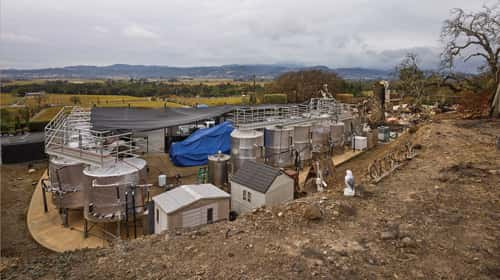
The October fires blew in on gale-force winds devouring with little discrimination thousands of homes both humble and grand and numbers of businesses large and small. Burning to the ground with equal ferocity, the firestorm hit a range of structures from a big Hilton Hotel to a small animal hospital. Stories of personal loss, including shocking loss of life were nearly overwhelming. Businesses suffered too, and the challenges facing business owners when deciding whether to rebuild, repair, or retreat will continue for months, or perhaps even years.
The effects on the two counties, Napa and Sonoma from the two major fires, the Tubbs and Atlas Peak, were different. In Sonoma County, the conflagration spilled down into urban areas taking out big box businesses and beloved cafés and restaurants and the destruction is still visible. In Napa County, the fires, located in the hills, consumed or damaged personal and commercial property, leveling one winery (you have to go into the hills or look carefully as you drive up Silverado Trail to notice the effects of the burn.) Business owners in both counties were candid about their future plans or options and, amid various levels of devastation, their relative good fortune. Here’s an overview of how some are progressing now.
Signorello Estate Winery
 In Napa County, Signorello Estate Winery was destroyed, but business continues. Before the fires, it’s hard to imagine that a beautiful building, constructed mostly of stone and surrounded by vineyards—which tend not to burn—would burn to the ground. “We had vineyards on three sides, but the fire came through from the fourth,” says Ray Signorello, owner.
In Napa County, Signorello Estate Winery was destroyed, but business continues. Before the fires, it’s hard to imagine that a beautiful building, constructed mostly of stone and surrounded by vineyards—which tend not to burn—would burn to the ground. “We had vineyards on three sides, but the fire came through from the fourth,” says Ray Signorello, owner.
Though he was out of town at the time, his wife was there and managed to escape to safety while the winemaker and vineyard team tried to fight the fire with hoses, but the fire overpowered them. “Once it gets going, you can’t stop it.”
While the devastation was great—they lost their offices, hospitality center, wine lab and his part-time residence—he considers himself fortunate. “The vineyards are somewhat in tact. The grapes had already been picked. We didn’t have any loss in terms of wines or grapes, or damage from smoke taint. Nobody got hurt. We didn’t lose the production that year. All the wines were in tanks on the crush pads, which the fire moved right past.” All of Signorello’s bottled wine is stored off-site so customers expecting shipments will not be disappointed. “We don’t have a wine club, but we do have an allocation program,” he says. “Twice a year, people get a certain number of bottles shipped to them. That’s all intact.” It hurts to lose the hospitality center with all its history, but he’s now in full swing to move on.
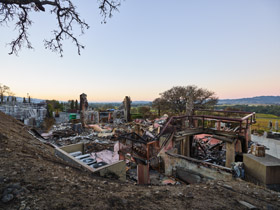 “We had a beautiful place that burned down, with a lot of history over its 35 years,” he says. “But the fire did that to me. So now, I get to create something from scratch.” He’s currently working with architects, Taylor Lombardo Architects of San Francisco. “My goal is to create something that’s cutting edge.” One of the ideas he has, with the obvious threat of another fire in mind, is to have a water canon on the roof. They have the water, he says, just not the delivery system. “I think we should be prepared for anything.”
“We had a beautiful place that burned down, with a lot of history over its 35 years,” he says. “But the fire did that to me. So now, I get to create something from scratch.” He’s currently working with architects, Taylor Lombardo Architects of San Francisco. “My goal is to create something that’s cutting edge.” One of the ideas he has, with the obvious threat of another fire in mind, is to have a water canon on the roof. They have the water, he says, just not the delivery system. “I think we should be prepared for anything.”
While the design and building is in process, the business will be continuing on and most staff will remain working. “We still have a network of national salespeople” he says. “My vineyard and winemaking teams are still intact, and my accounting team is busier than ever, since we lost some data. Making all this possible is a smooth process of insurance compensation, thanks to the assistance of The Greenspan Co./Public Adjusters, out of San Francisco.” They serve as intermediaries between Signorello and the insurance companies. “It’s a massive job,” he says. “Their team will be working with us for the next two years, as we rebuild.”
Signorello has learned to respect the concept of being properly insured, especially after having lost 15,000 cases of wine in the Wine Central Fire in Mare Island, in 2005. He’s had the same insurance agent for 30 years and feels fortunate that when it comes to something as complex as a fire loss, he’s pleased and grateful that he’s had the right volume and right kind of insurance and an adjuster to make the process of recovery smooth.
Safari West
As the Tubbs Fire gathered momentum in the early hours on Sunday, October 8, 2017, Safari West, with 1,000 exotic animals of the kind most often seen on TV nature programs, and a full roster of sleeping guests, lay directly in the path of the firestorm. Cellular service in many areas was down and communication was spotty. When news of the location and spread of the fire got around, one instantly feared for the Safari West animals. Reading the news later in the week that all the animals were safe, thanks to founder Peter Lang’s heroic efforts, (he let his own home burn down while he focused on evacuating his guests and saving his animals,) was perhaps the first good news many read during that week of fire and fear. The news from Safari West continues to be upbeat—Safari West is safe and open for visitors.
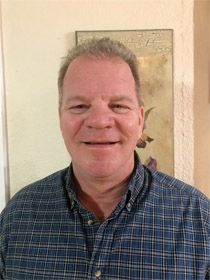 Other than the home, they didn’t lose any complete structures, but, according to Keo Hornbostel, general manager, they’ve had to replace fencing and landscaping before they could re-open. Complicating their return to normal functioning was the consequence of the widespread damage wrought by the fire. “We dealt with a lot of outside influences,” says Hornbostel. “Mark West Springs Road had to be open, which meant they had to make sure the fires were out before PG&E could come and re-rout their power lines. Though we felt we were ready, we had to wait a good four weeks for the first responders and PG&E to get their work done before we could open.”
Other than the home, they didn’t lose any complete structures, but, according to Keo Hornbostel, general manager, they’ve had to replace fencing and landscaping before they could re-open. Complicating their return to normal functioning was the consequence of the widespread damage wrought by the fire. “We dealt with a lot of outside influences,” says Hornbostel. “Mark West Springs Road had to be open, which meant they had to make sure the fires were out before PG&E could come and re-rout their power lines. Though we felt we were ready, we had to wait a good four weeks for the first responders and PG&E to get their work done before we could open.”
Looking back on the events, he’s proud of the way the staff worked to keep the embers from taking hold of the grounds and how they worked with the firefighters to get in every day and tend the animals. Not one animal was lost. “People asked if we wished we had evacuated the animals, but we have good protocols in place, if we have time—meaning, six to 12 hours’ notice. But we only had 15 to 20 minutes to get our guests and employees out.” How did they manage to keep animals like giraffes and rhinos from panicking? “We have to give them more credit than we might think,” he says. “They’re in open enclosures. They go to where the fire has already burned the grass, or where the grass hasn’t burned yet.”
He mentions that Pepperwood Preserve (a 3,200-acre nonprofit educational nature preserve) had fire but the cows stayed safe. “Pepperwood has 1,000 head of cattle up there,” he says. “They avoided the areas where the fire was burning.” He is glad to say that Safari West is open and welcomes people to come from near and far to see animals thriving in a place that feels like a trip to the Serengeti—minus the airfare. “We are a bargain,” he laughs, “compared to going to Africa!”
Fountaingrove Inn
 The Fountaingrove Inn, owned by Angelo Ferro, burned to the ground and was declared a total loss. While everyone wants to rebuild, says General Manager Justin Hayman, the issues—aside from the emotional devastation—are complex. He emphasizes that they’re still in the early stages of planning for the future. “It’s a difficult process for businesses,” he says. “We want to rebuild, but it’s a big question mark right now.” Time is an obstacle. He says it will be a few months before he’ll know what some of their steps going forward will be. “Just to rebuild the place—from the ground up—is a three-year project,” he says. Months after the fire, he’s still working on collecting bids to get rid of the debris and ash, and can’t project the time frame. “We don’t know what the future holds,” he says. Hayman has talked to many people who lost their homes, and while they might have in the neighborhood of 3,000 square feet, the Inn had occupied 80,000 square feet. The difference in scale and magnitude of the claim is considerable, and with that comes a longer timeline. The loss, long or short, has been painful. “I’d been at the property for 13 years,” he says. “It’s as if somebody cut one of my limbs off.”
The Fountaingrove Inn, owned by Angelo Ferro, burned to the ground and was declared a total loss. While everyone wants to rebuild, says General Manager Justin Hayman, the issues—aside from the emotional devastation—are complex. He emphasizes that they’re still in the early stages of planning for the future. “It’s a difficult process for businesses,” he says. “We want to rebuild, but it’s a big question mark right now.” Time is an obstacle. He says it will be a few months before he’ll know what some of their steps going forward will be. “Just to rebuild the place—from the ground up—is a three-year project,” he says. Months after the fire, he’s still working on collecting bids to get rid of the debris and ash, and can’t project the time frame. “We don’t know what the future holds,” he says. Hayman has talked to many people who lost their homes, and while they might have in the neighborhood of 3,000 square feet, the Inn had occupied 80,000 square feet. The difference in scale and magnitude of the claim is considerable, and with that comes a longer timeline. The loss, long or short, has been painful. “I’d been at the property for 13 years,” he says. “It’s as if somebody cut one of my limbs off.”
For the staff—and for neighboring hotels especially—there was a bit of a bright side to the tragedy. “Prior to the fire, the job market was difficult,” says Hayman. “Employers couldn’t find staff to hire. But with the loss of the Fountaingrove Inn, with 100 employees, and the Hilton, with about 150, suddenly there was staff available to work in local hotels that desperately needed the employees. We did well helping place our staff,” he says. “They were able to fill an existing void, and it was relatively easy for everybody to land on their feet.”
As for himself, he’s being retained to help with the claim and when (and if) they rebuild, he says he’ll be coordinating that. Meanwhile, the clean up is long and complex and the future is unclear. Nevertheless, he’s thankful that most of the staff has transitioned smoothly into other jobs, and he’s hopeful for the future. “Rebuilding something as large as a hotel takes a long time,” he says. “Our intention is to rebuild, and we would love some public support behind us as we progress with the situation.”
K-Mart
 One of several franchise businesses in the City of Santa Rosa, K-Mart burned to the ground and having terminated its lease on October 8, just before the fires, the business will not return to that location. Owners of the property, Cleveland Avenue Associates, are now free, once the process of getting bids to remove debris and clearing the property is accomplished, to entertain bids for a new building. According to their representative, Tom Laegerdo, a real estate broker with Keegan and Coppin, they’re looking to do something different, to upgrade and break up the 114,500 sq. ft. space for two to five tenants. “We hope to be under construction by the fourth quarter,” he says, “but couldn’t tell you who or what or why.” They had already been working toward that goal before the fires. “It’s one step at a time.” The biggest obstacle is time—and right now, getting the bids in and getting the contractors under way to remove debris.
One of several franchise businesses in the City of Santa Rosa, K-Mart burned to the ground and having terminated its lease on October 8, just before the fires, the business will not return to that location. Owners of the property, Cleveland Avenue Associates, are now free, once the process of getting bids to remove debris and clearing the property is accomplished, to entertain bids for a new building. According to their representative, Tom Laegerdo, a real estate broker with Keegan and Coppin, they’re looking to do something different, to upgrade and break up the 114,500 sq. ft. space for two to five tenants. “We hope to be under construction by the fourth quarter,” he says, “but couldn’t tell you who or what or why.” They had already been working toward that goal before the fires. “It’s one step at a time.” The biggest obstacle is time—and right now, getting the bids in and getting the contractors under way to remove debris.
Chloe’s French Café
Located a few blocks away from K-Mart, Chloe’s French Café has closed after 11 years because of fire damage to the premises, caused by water released from the sprinkler system. Chloe’s, co-owned by Renee, her husband, Alain, and his brother, Marc Pisan, was a family-owned and operated café and French bakery with an iconic French bakery truck named “Chloe,” imported from France, which was lost to the fire. Though the building which housed their café didn’t burn to the ground, the damage was extensive. “The heat triggered the sprinkler system,” says Renee Pisan. Sheet rock had to be removed and replaced from the atrium and some of the effected suites.
The owners have sadly closed Chloe’s Café, but considering the amount of lost homes and businesses, they feel lucky. “We can’t believe that of our 26 employees, no one lost their homes,” says Renee. “And we had a place to transition to.” They’re now in Windsor, operating a catering business, Chloe’s Catering, and planning to do event and wine dinners while keeping loyal customers happy by delivering to clients in Rohnert Park and Santa Rosa. “We have box lunches, salads, soup and pasta gratin,” she says. “We are keeping it basic right now.” Keep in touch with them at chloescatering.com.
The Northtown Animal Hospital
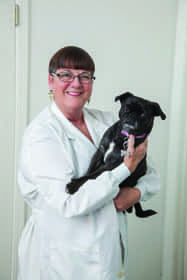 Conveniently located across the freeway and easily accessible to residents of Coffey Park, Northtown Animal Hospital sat in the path of the inferno and was swallowed in flames just after staff assistant Marilyn Engstrom rushed in, as a burning branch fell onto her car, to rescue the hospital’s lone patient, JJ the Cat. The building burned down, sparing only the sign.
Conveniently located across the freeway and easily accessible to residents of Coffey Park, Northtown Animal Hospital sat in the path of the inferno and was swallowed in flames just after staff assistant Marilyn Engstrom rushed in, as a burning branch fell onto her car, to rescue the hospital’s lone patient, JJ the Cat. The building burned down, sparing only the sign.
The property has been in the same location as an animal hospital since 1958, says owner Racelle LaMar, DVM, who worked there since 2008 and bought the place in 2011. Immediately after the fire, she and her colleagues were busy full time seeing that the clients they could find had their pets’ medications. Now, they continue to make house calls, look for a place to set up a temporary hospital, while LaMar is working to get her hospital rebuilt.
“The plan is to restore it and upgrade a bit,” says LaMar. “It’s going to be a long process. There are so many steps.” First, the lot must be cleared. Next, the soil must be tested for contamination, and then it has to be surveyed. Arborists must also identify any trees that may be hazardous, and an application must go through city planning. “That could take months,” she says. “The soils analysis company can’t be out there until April.” She says she is well insured and has insurance to cover business interruption through two years, or until the building is restored. She hopes the process can be completed by then. Meanwhile, with house calls, and even on the phone, there’s plenty she can still do for people’s pets. “We know where to send them. We can get them their vaccinations and their medicines.”
Moving forward
LaMar mentions that grief may take a back seat following a painful loss. Such as a death, there is urgent business, preparations and affairs to take care of, following devastation. Once that process is under way, it will be time for grief to set in. By then, the general public may have moved on to other crises and lost interest in fire victims—just about the time when folks who have suffered catastrophic loss need support.
“This is going to be a marathon for people to get their homes and businesses restored,” she says, “so don’t forget about them.”
Focusing on prevention
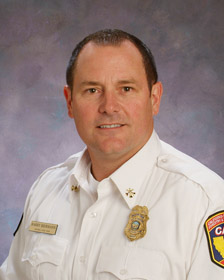 “In recent years California has experienced more large and damaging wildfires than anytime in recorded history,” says Napa County Fire Chief Barry Biermann. “On October 8th and 9th of last year we saw 70 to 75 mph winds with gusts in the 90 mph range, which is unprecedented for us.” The trend indicates this will not be the last we will see of such fires in California. “Of the largest and most devastating wildfires in our state in the last 100 years, 80 percent have occurred in the last 15 years,” he says. “Unfortunately, these types of large fires are becoming a more frequent event.”
“In recent years California has experienced more large and damaging wildfires than anytime in recorded history,” says Napa County Fire Chief Barry Biermann. “On October 8th and 9th of last year we saw 70 to 75 mph winds with gusts in the 90 mph range, which is unprecedented for us.” The trend indicates this will not be the last we will see of such fires in California. “Of the largest and most devastating wildfires in our state in the last 100 years, 80 percent have occurred in the last 15 years,” he says. “Unfortunately, these types of large fires are becoming a more frequent event.”
With that in mind, the Cal Fire program is focused now on prevention. According to Biermann, Cal Fire is pushing hard for fuel management, reducing fuel (trees and brush) loads by control burns, assisting property owners with chipping, and doing everything they can to maintain healthy forests. “We take pride in our long-standing mission to keep 90 percent of all wildland fires to less than 10 acres. But now we’re finding out that once a fire starts, under these extreme conditions, we cannot stop them until the weather changes. This is made even harder by widespread drought, stressed vegetation and pervasive tree mortality—a result of beetle kill. There is risk everywhere,” he adds. “We want to get it out to everyone that wildfire is always a threat in California. We are constantly sharing the latest information on the best ways to prepare for time. Every year, we figure out what’s causing fires in our area of the state, and then we go out and address them.”
Whether as a home- or business-owner, go to ReadyforWildfire.org for the Cal Fire information you need to be up-to-date on how to best prevent or prepare for a fire situation.
ReadyforWildfire.org offers tips for an orderly evacuation, gathering together an emergency supply kit, preparation of your property, how to defend your space, and what’s out in the hills that makes fire fighting even more difficult.


